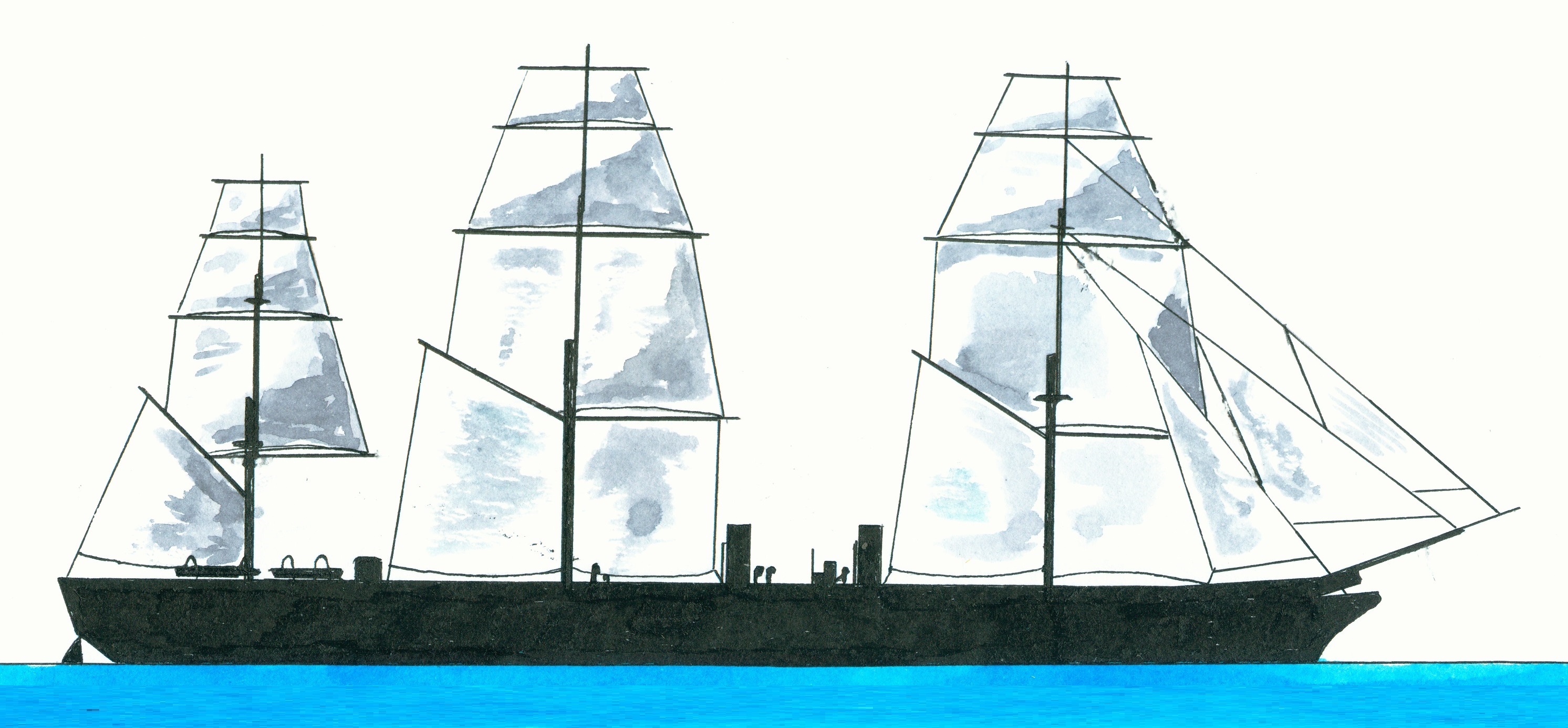In the Crimean (1) war used France wood-built steam armoured floating batteries like the Tonnante in the Black Sea to bombard the Russian fortress Kilburn which protect the navy harbour of Nicolaiev. The result was a capitulation of the Russian forces. In the United Kingdom where at the same period also floating batteries like the Trusty built using French drawings of the Dévastation-class. In the Netherlands was the navy also interested in building such vessels (for instance the Draak) and the minister of navy received some papers which he sent to his Director of Naval Construction Turk.(2) Turk was asked for advice but he was ordered to sent the papers back to The Hague. However Turk contacted himself England and in one letter he received included some interesting small sketches.
On 2 May 1861 answered Thomas Brown of the Royal Exchange Buildings Turks’ letter of 22 April.(3) He denied that England built a thick iron plated gunboat. There were some protected vessels built used as floating batteries during the Crimean of which one was the Thrusty.(4) The Warrior and Black Prince were frigates of around 6.000 tons, the rams Resistance and Defense of around 3.500 tons and lately was the building ordered of two intermediate size (around 4.000 tons) batteries. The next move of Brown however is interesting. He wrote that immediately after he received Turks’ letter he visited the Woolwich Dockyard where the Trusty was lying. There he made the next sketches and remarked that ‘Her arrangement appears to him to posses many and great advantages especially when she is to be stationary.
Notes
1. Between October 1853 and February 1856 with one side the Russian Empire and at the other side France, United Kingdom, Ottoman Empire and Sardinia.
2. Lambertus Katharinus Turk (2 August 1811 Maarssen, Netherlands-3 September 1873 The Hague, Netherlands) was appointed on 1 May 1854 as Chief engineer and director of the navy yard at Flushing. Since 1 April 1857 he was also appointed as Director of Naval Construction. He was transferred to The Hague on 1 May 1863 cuasing his dismissal as director of the navy yard.
3. Archive Marine Etablissement Vlissingen (95.1) inventory no. 1105 (Zeeuws Archief).
4. The building of the Trusty (and not Thrusty) of the Aetna-class at the shipyard of R&H Green, Limehouse no. 315 was ordered on 4 October 1854, laid down on 9 October, a year later on 3 May launched and completed on 12 June. Total costs 63.941 British pound sterling. Already broken up in 1864 at Castle, Charlton.
British HMS Warrior and Black Prince
On 2 May 1861 answered Thomas Brown of the Royal Exchange Buildings Turks’ letter of 22 April.(3) He denied that England built a thick iron plated gunboat. There were some protected vessels built used as floating batteries during the Crimean of which one was the Thrusty.(4) The Warrior and Black Prince were frigates of around 6.000 tons, the rams Resistance and Defense of around 3.500 tons and lately was the building ordered of two intermediate size (around 4.000 tons) batteries. The next move of Brown however is interesting. He wrote that immediately after he received Turks’ letter he visited the Woolwich Dockyard where the Trusty was lying. There he made the next sketches and remarked that ‘Her arrangement appears to him to posses many and great advantages especially when she is to be stationary.
1. Between October 1853 and February 1856 with one side the Russian Empire and at the other side France, United Kingdom, Ottoman Empire and Sardinia.
2. Lambertus Katharinus Turk (2 August 1811 Maarssen, Netherlands-3 September 1873 The Hague, Netherlands) was appointed on 1 May 1854 as Chief engineer and director of the navy yard at Flushing. Since 1 April 1857 he was also appointed as Director of Naval Construction. He was transferred to The Hague on 1 May 1863 cuasing his dismissal as director of the navy yard.
3. Archive Marine Etablissement Vlissingen (95.1) inventory no. 1105 (Zeeuws Archief).
4. The building of the Trusty (and not Thrusty) of the Aetna-class at the shipyard of R&H Green, Limehouse no. 315 was ordered on 4 October 1854, laid down on 9 October, a year later on 3 May launched and completed on 12 June. Total costs 63.941 British pound sterling. Already broken up in 1864 at Castle, Charlton.




